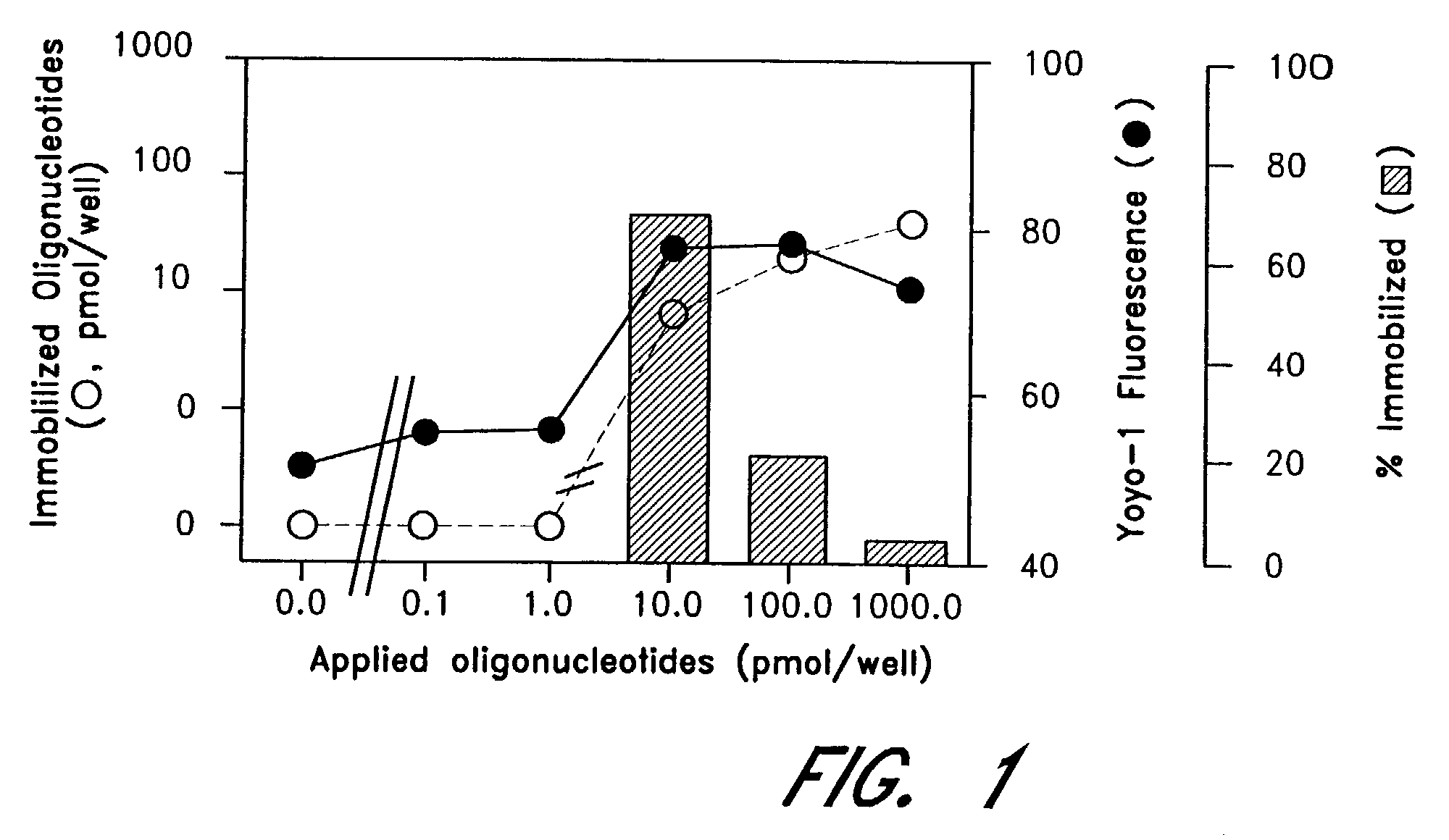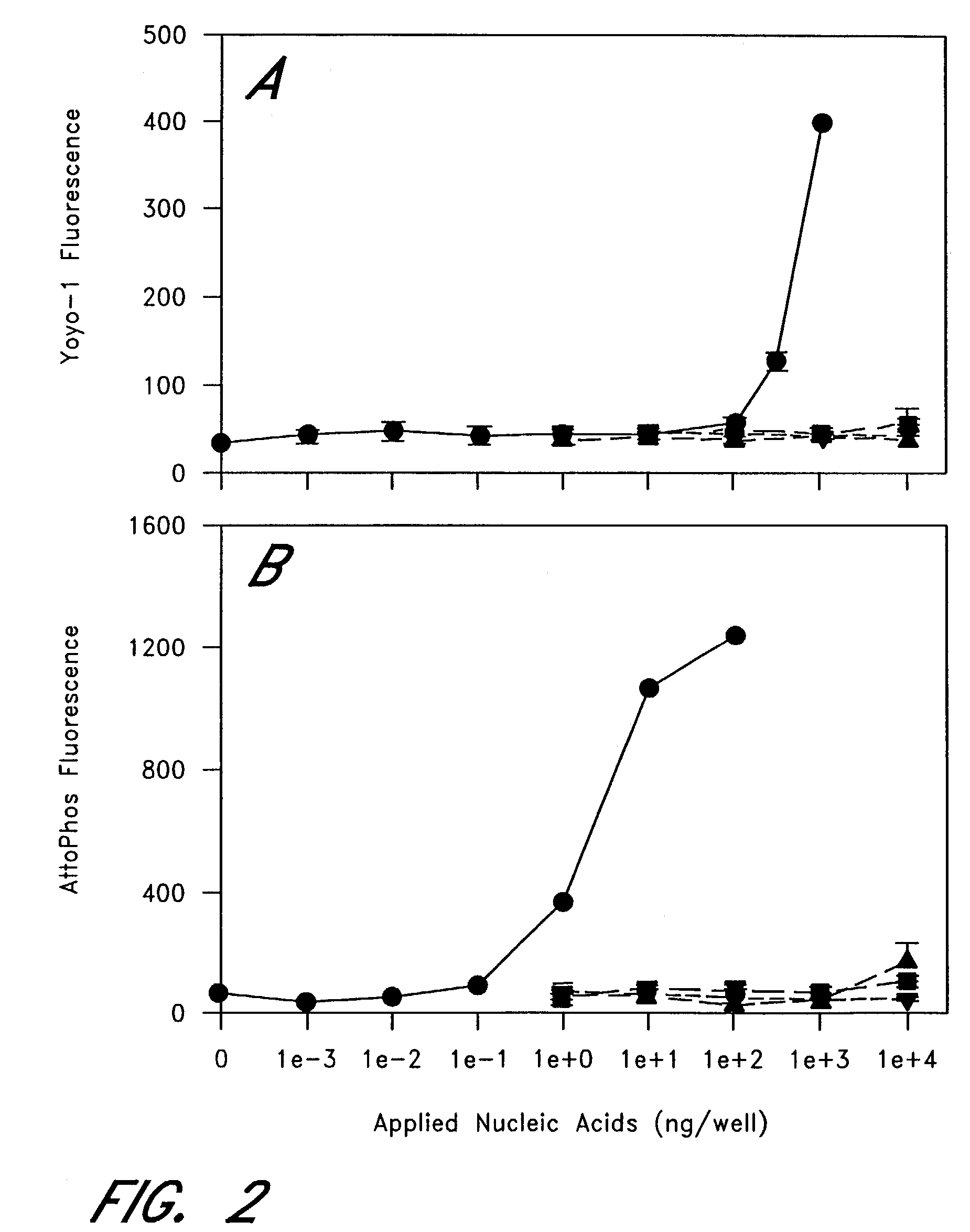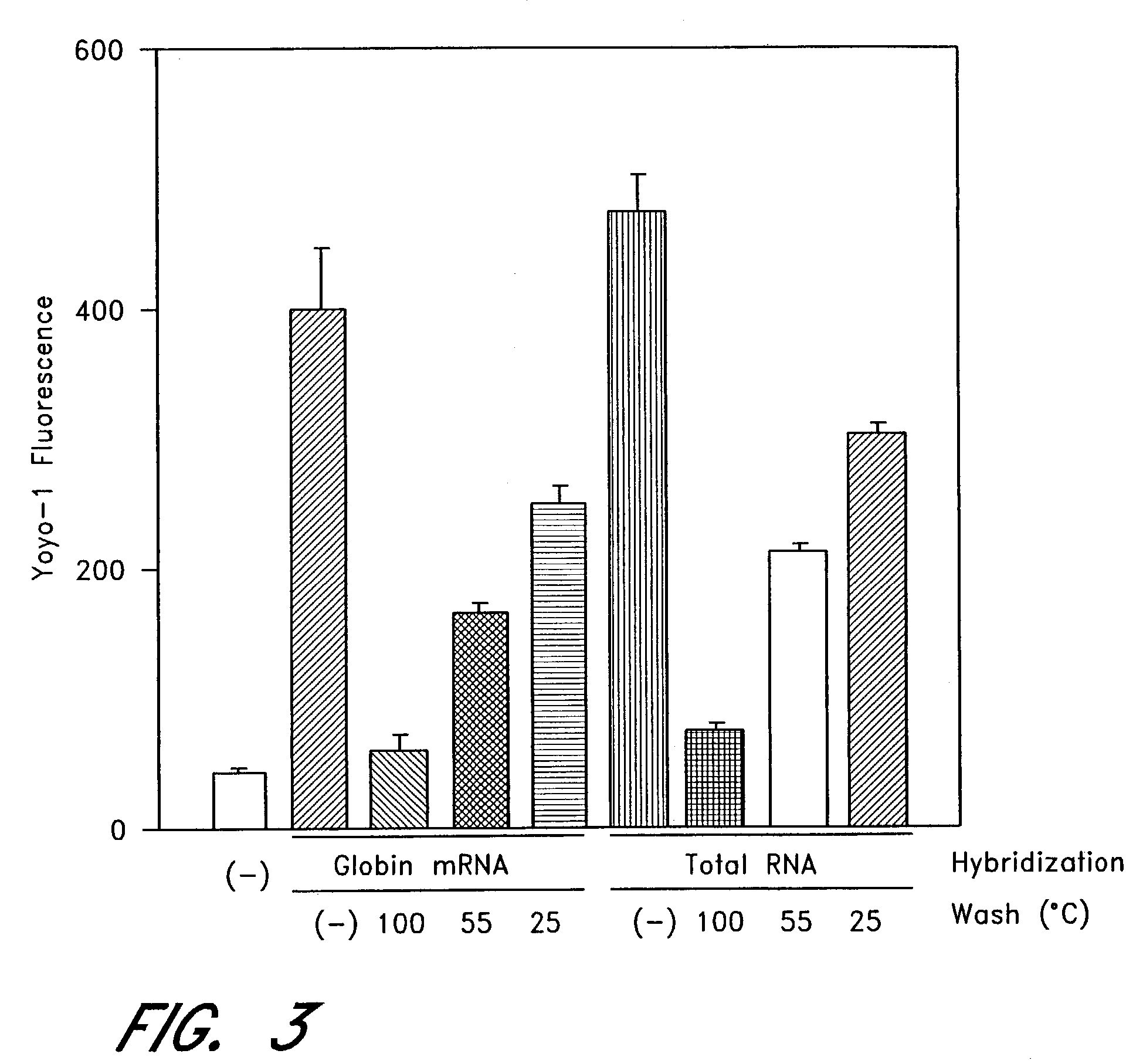Method of preparing cell lysate
a cell lysate and cell technology, applied in the field of cell lysate preparation, can solve the problems of time-consuming and laborious rt-pcr process, etc., and achieve the effects of simplifying the preparation of cell lysate, stabilizing the yield of recovered cytosolic rna, and facilitating fluctuation of recovered mrna
- Summary
- Abstract
- Description
- Claims
- Application Information
AI Technical Summary
Benefits of technology
Problems solved by technology
Method used
Image
Examples
examples
[0050]The invention will be further explained with reference to Examples shown below. Materials and methods used in the Examples are as follows:
[0051]Materials: Oligo(dT)-immobilized oligonucleotide-immobilized PCR microplates (GENEPLATE®-PP, Hitachi Chemical Research Center, Irvine, Calif.), YOYO™-1 (1,1′-(4,4,7,7-tetramethyl-4,7-diazaundecamethylene)-bis-4-[3-methl-2,3-dihydro-(benzo-1,3-oxazole)-2-methylidene]-quinoliumetraiodide, Molecular Probes, Eugene, Oreg.), reagents for PCR (Taq polymerase, EZ rTth RNA-PCR kit) (Perkin Elmar, Foster City, Calif.), K562 cell line (American Type Culture Collection, Rockville, Md.), 100 bp DNA ladder, phosphate buffered saline (PBS), vanadyl ribonucleoside complex (VRC), rabbit globin mRNA, cell culture medium and appropriate antibiotics, buffer-saturated phenol (Gibco-BRL, Geithersburg, Md.), fetal bovine serum (FBS, HyClone, Logan, Utah), biotin-dUTP (Clontech, Palo Alto, Calif.), ATTOPHOS™ (alkaline phosphatase substrate, JBL Scientific, S...
experiment 1
of Immobilized Oligonucleotides
[0059]GENUNC™ PP microplates (Nunc, Naparville, Ill.) treated at Hitachi Chemical Research Center, Irvine, Calif., were obtained from AGCT, Irvine, Calif., and oligonucleotides were immobilized thereonto. Oligonucleotide concentrations were determined before and after immobilization as 1.0 OD260 unit equals to 30 μg / ml, and the amounts of immobilized oligonucleotides were calculated by subtracting one value from another. In separate experiments, YOYO-1 was diluted in TE (10 mmol / L Tris, pH 8.0, 1 mmol / L EDTA) in a final dilution of 1:1000, and applied to GENEPLATE®-PP microplates. The fluorescence was determined by CYTOFLUOR™ 2300 (Millipore, Bedford, Mass.) with excitation and emission wavelengths of 485 nm (bandwidth 20 nm) and 530 nm (band width 25 nm), respectively, as previously described (Miura Y, at al., Clin Chem 1996:42:1758-64, Miura Y, et al., Cancer Lett 1997:116:139-44).
[0060]FIG. 1 is a graph showing quantities of oligo(dT) immobilized on...
experiment 2
city of Oligonucleotide-Immobilized PCR Microplates
[0061]The next series of experiments was conducted to show mRNA specificity. FIG. 2A is a graph showing mRNA specificity of the oligonucleotide-immobilized PCR microplates, wherein YOYO-1 fluorescent intensity indicates high specificity to mRNA (●) over DNA (▪), rRNA (Δ), and tRNA (∇). FIG. 2B is a graph showing mRNA specificity of the oligonucleotide-immobilized PCR microplates, wherein substrate ATTOPHOS™ indicates high specificity to mRNA (●) over DNA (▪), rRNA (Δ), and tRNA (∇).
[0062]In the figures, various concentrations of rabbit globin mRNA (●), DNA (▪), rRNA (Δ), tRNA (∇) were suspended in 50 μl of hybridization buffer (10 mmol / L Tris, pH 8.0, 1 mmol / L EDTA, 0.5 M NaCl) and applied to the well of the oligonucleotide-immobilized PCR microplates. After hybridization at room temperature for 1 hour, each well was washed once with hybridization buffer. In FIG. 2A, YOYO™-1 was diluted in TE (10 mmol / L Tris, pH 8.0, 1 mmol / L EDTA) ...
PUM
| Property | Measurement | Unit |
|---|---|---|
| pH | aaaaa | aaaaa |
| pH | aaaaa | aaaaa |
| volume | aaaaa | aaaaa |
Abstract
Description
Claims
Application Information
 Login to View More
Login to View More - R&D
- Intellectual Property
- Life Sciences
- Materials
- Tech Scout
- Unparalleled Data Quality
- Higher Quality Content
- 60% Fewer Hallucinations
Browse by: Latest US Patents, China's latest patents, Technical Efficacy Thesaurus, Application Domain, Technology Topic, Popular Technical Reports.
© 2025 PatSnap. All rights reserved.Legal|Privacy policy|Modern Slavery Act Transparency Statement|Sitemap|About US| Contact US: help@patsnap.com



